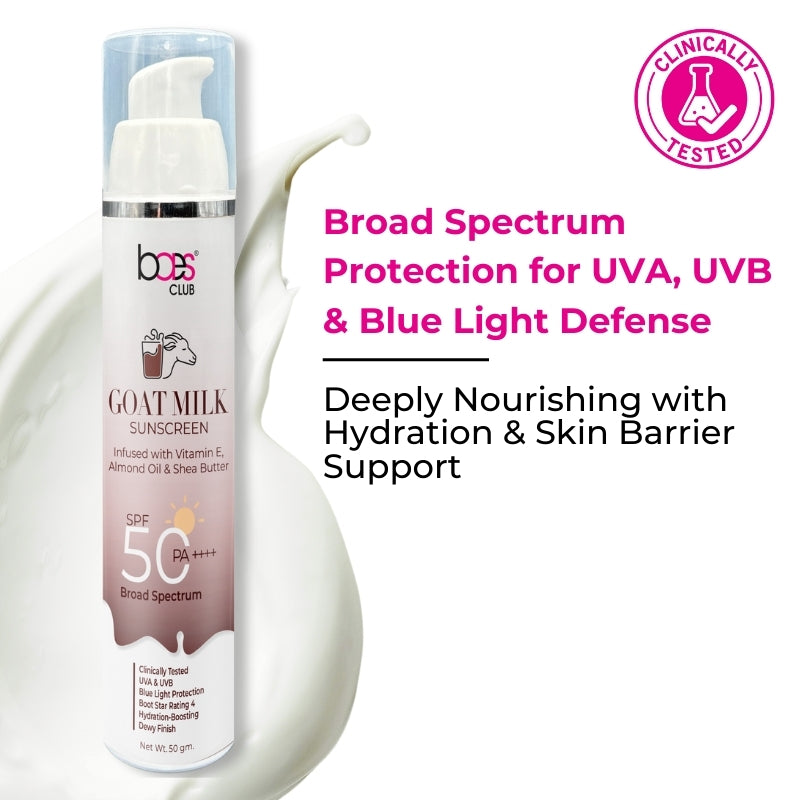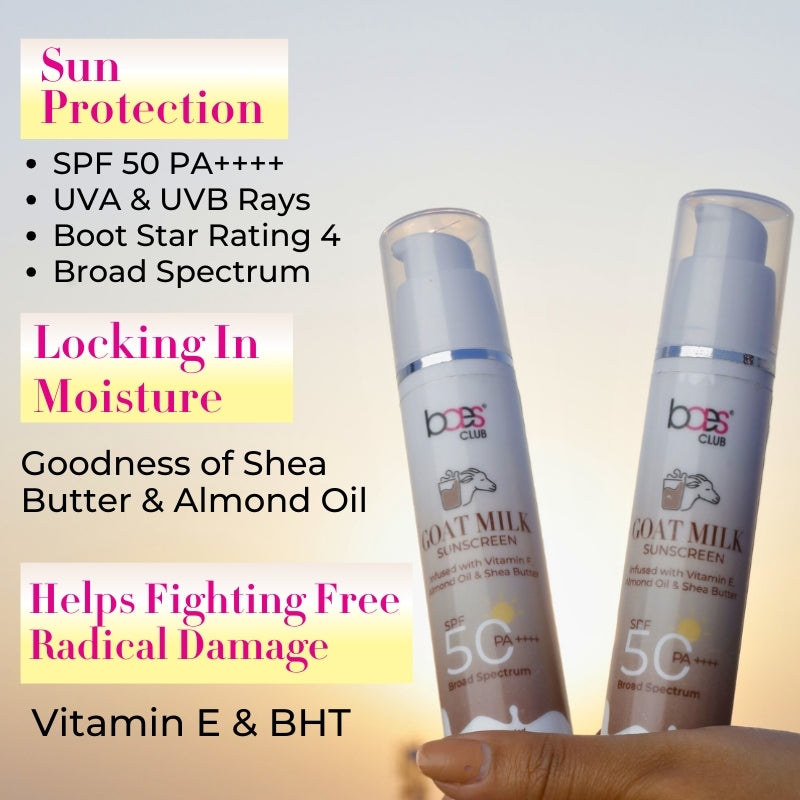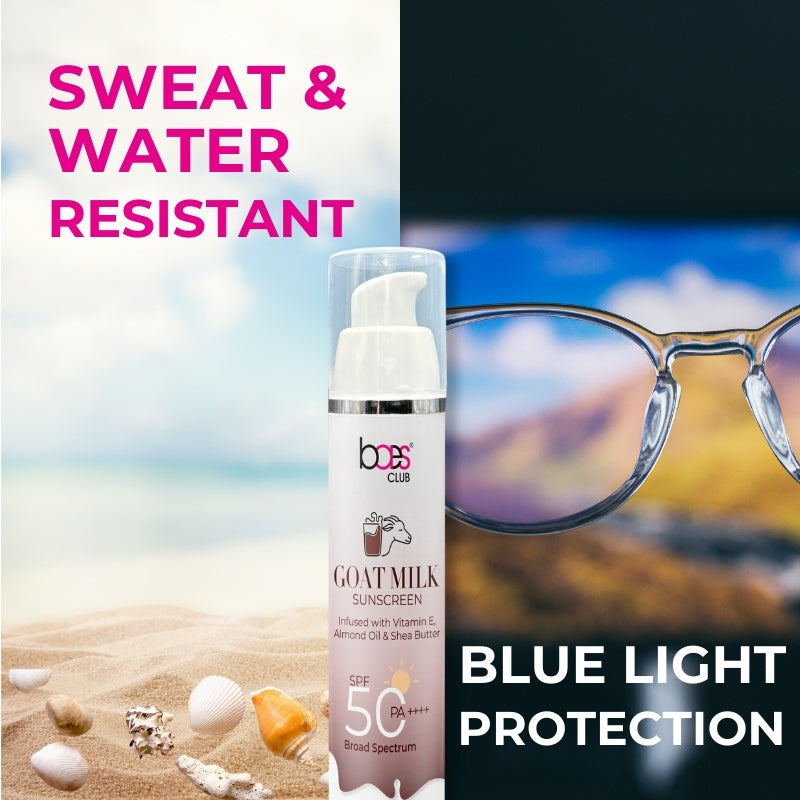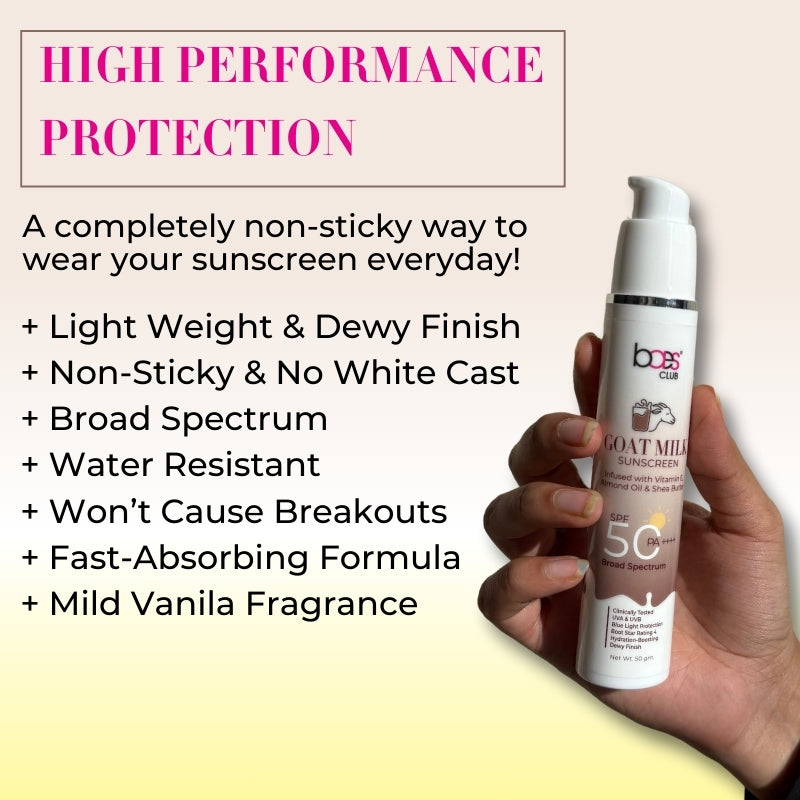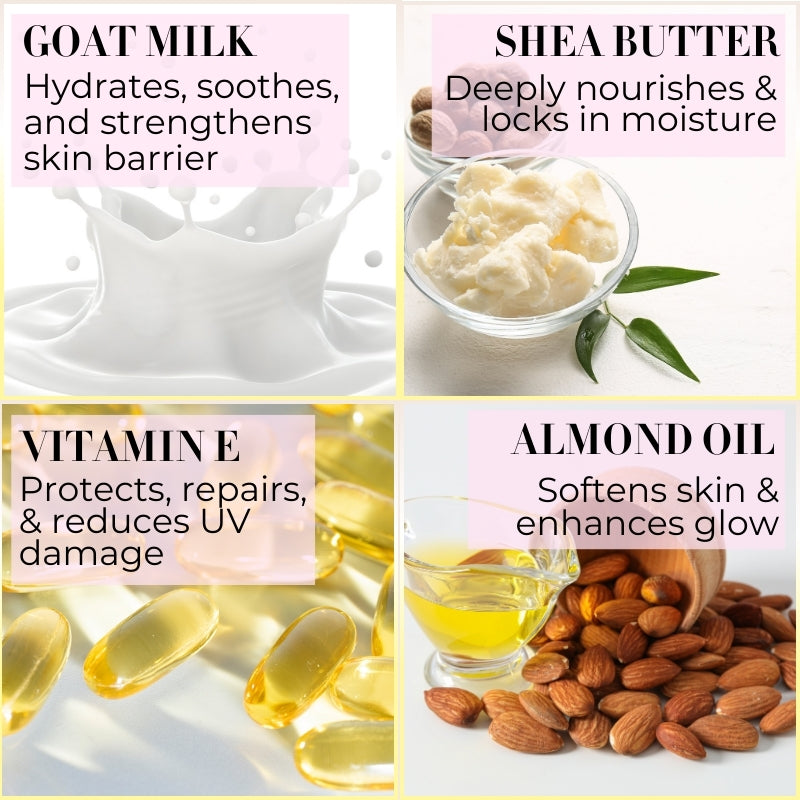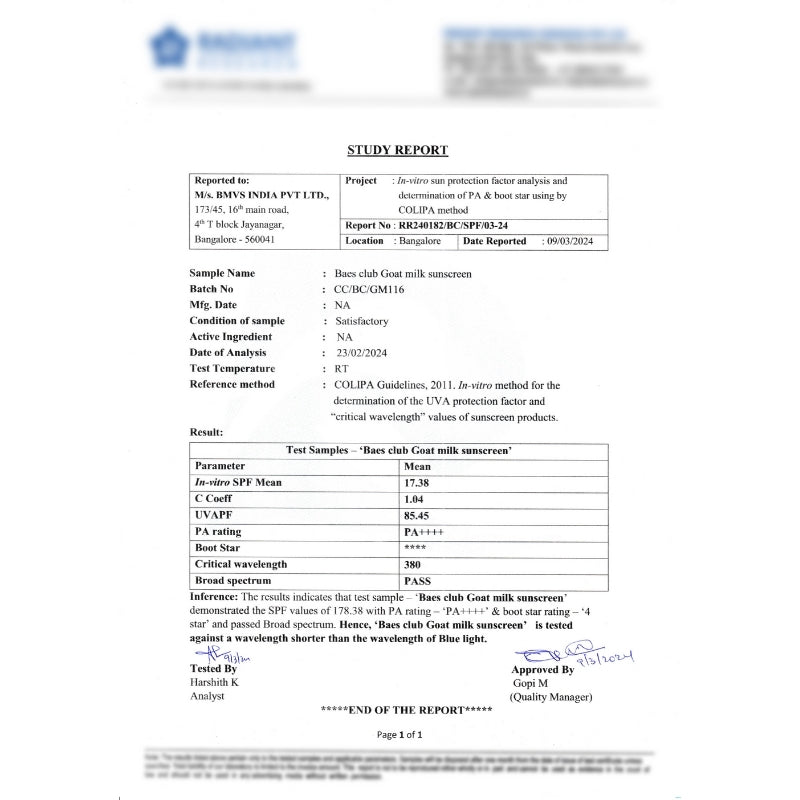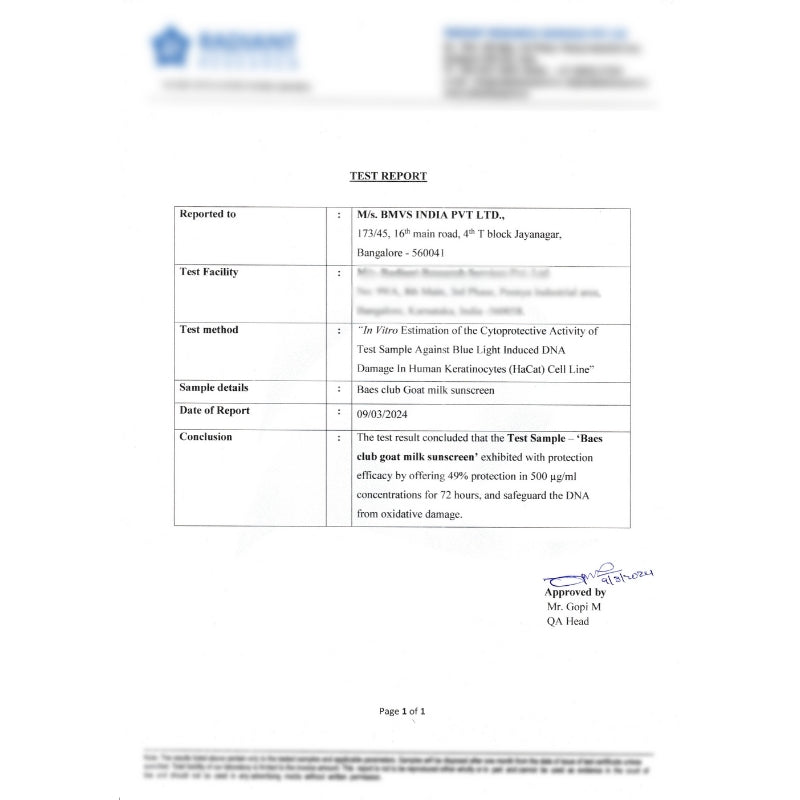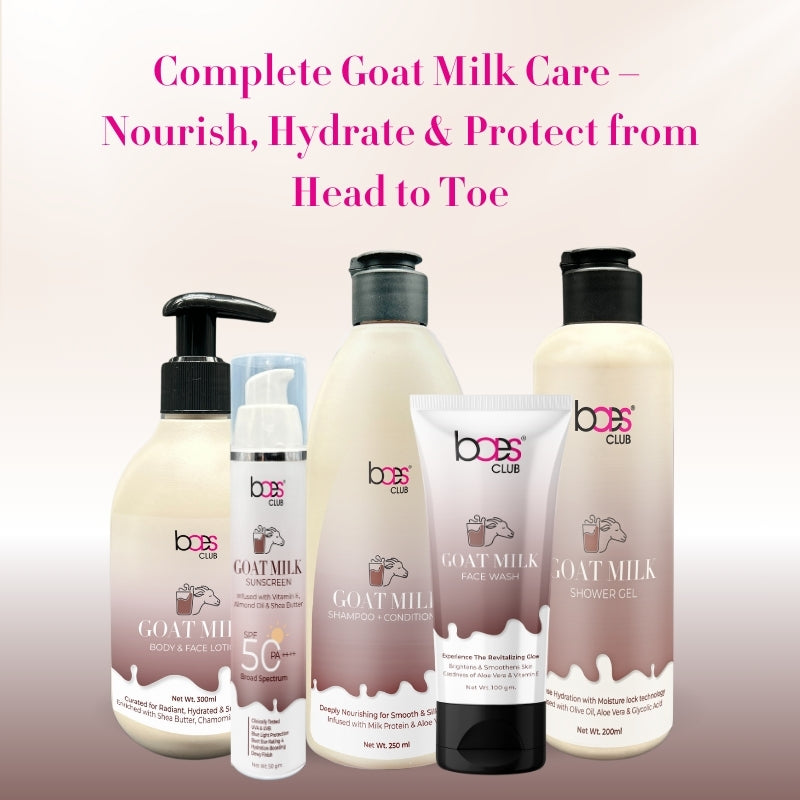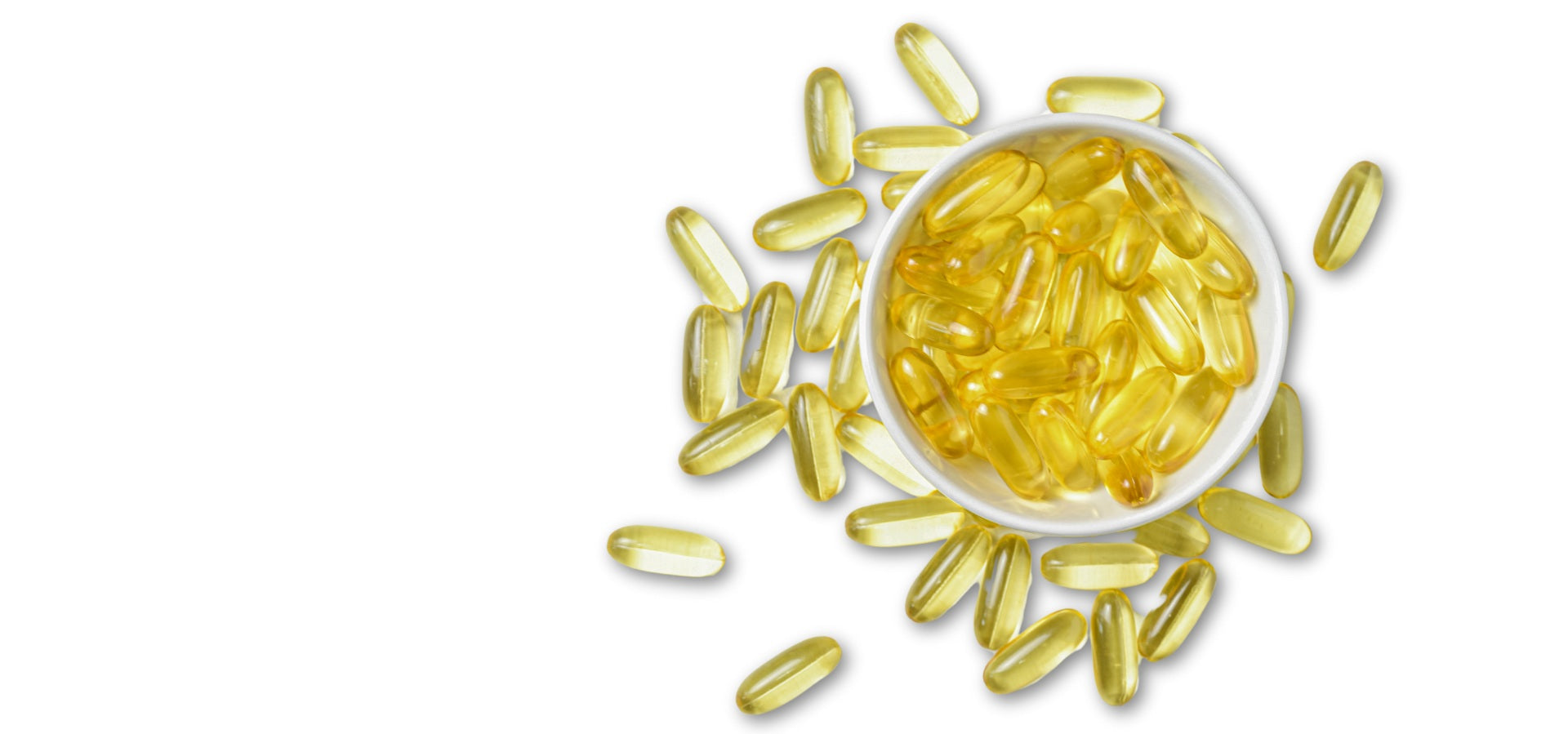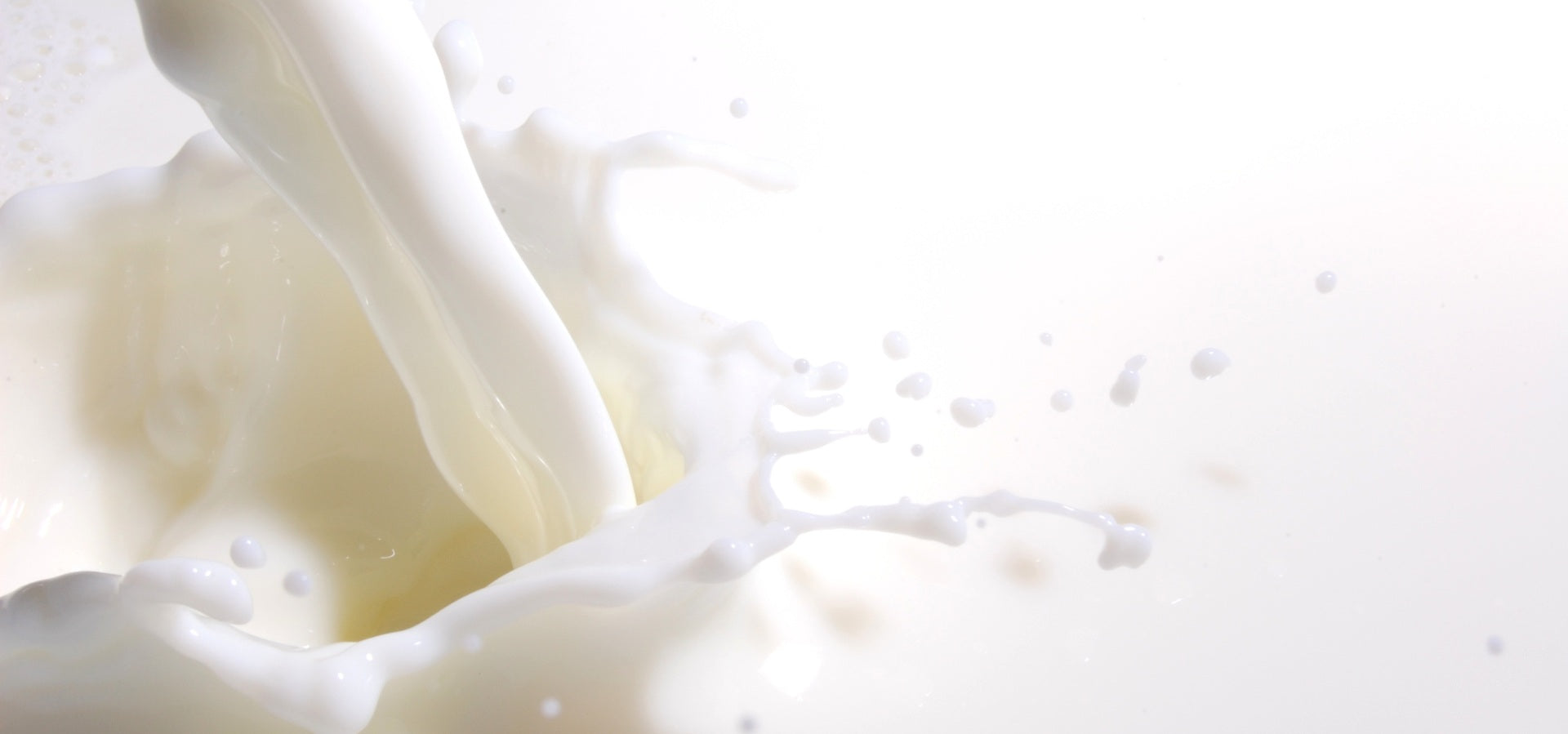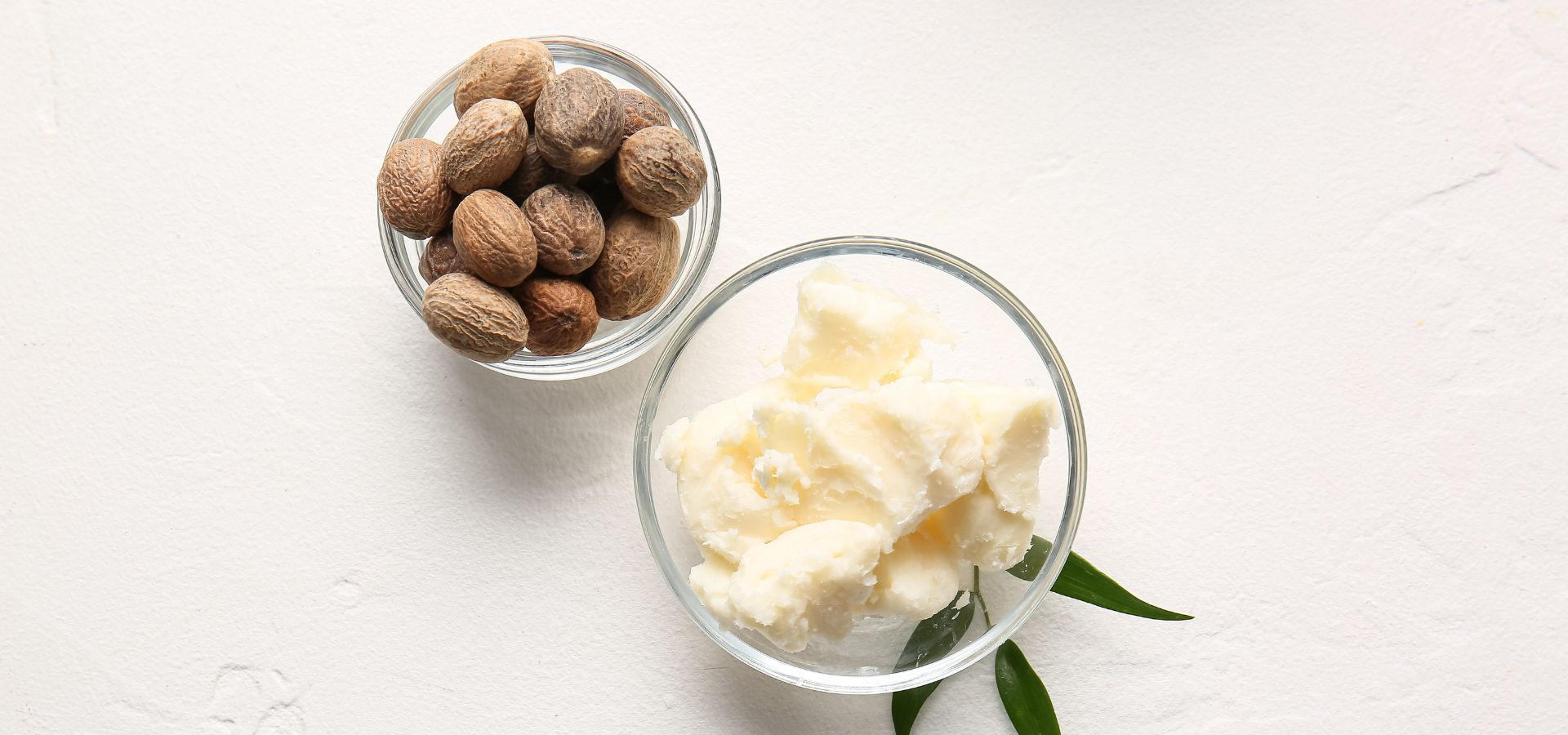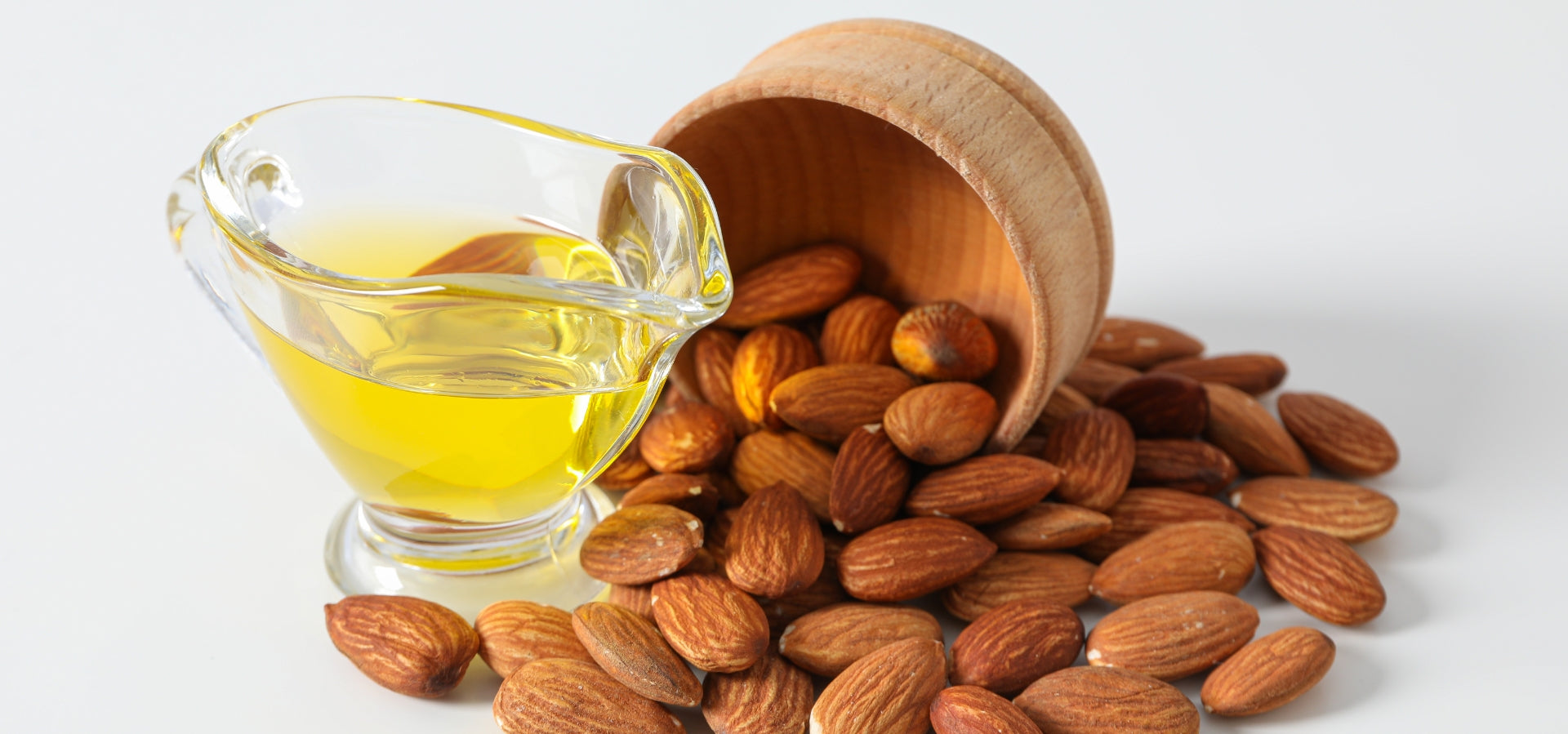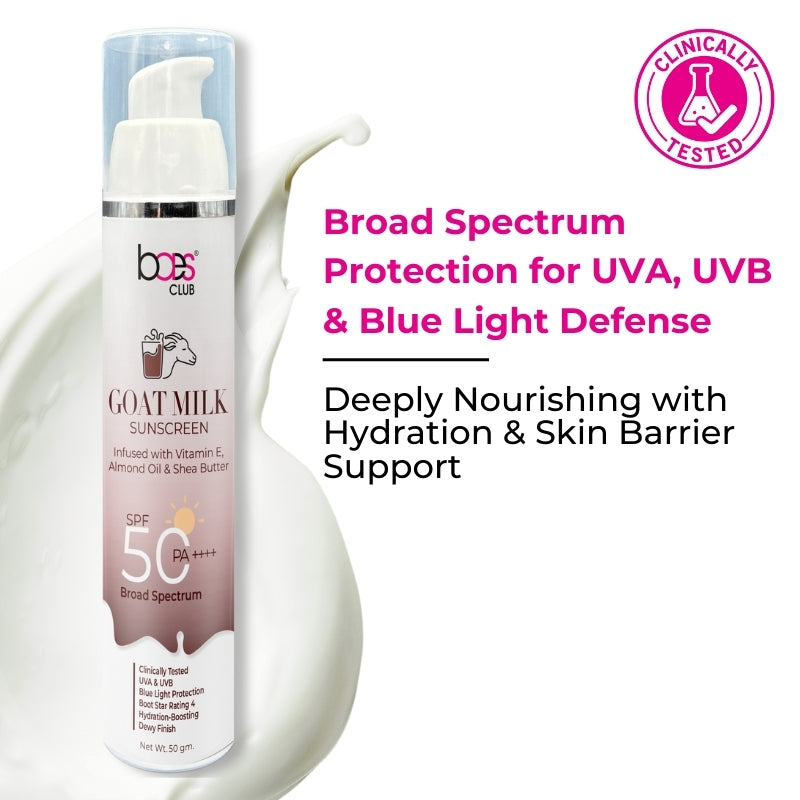
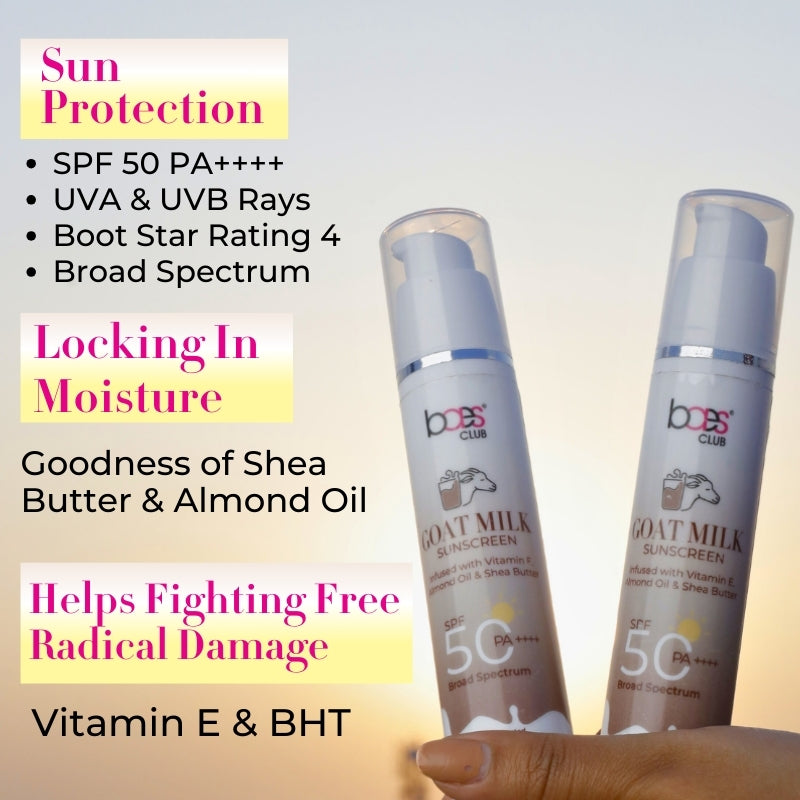
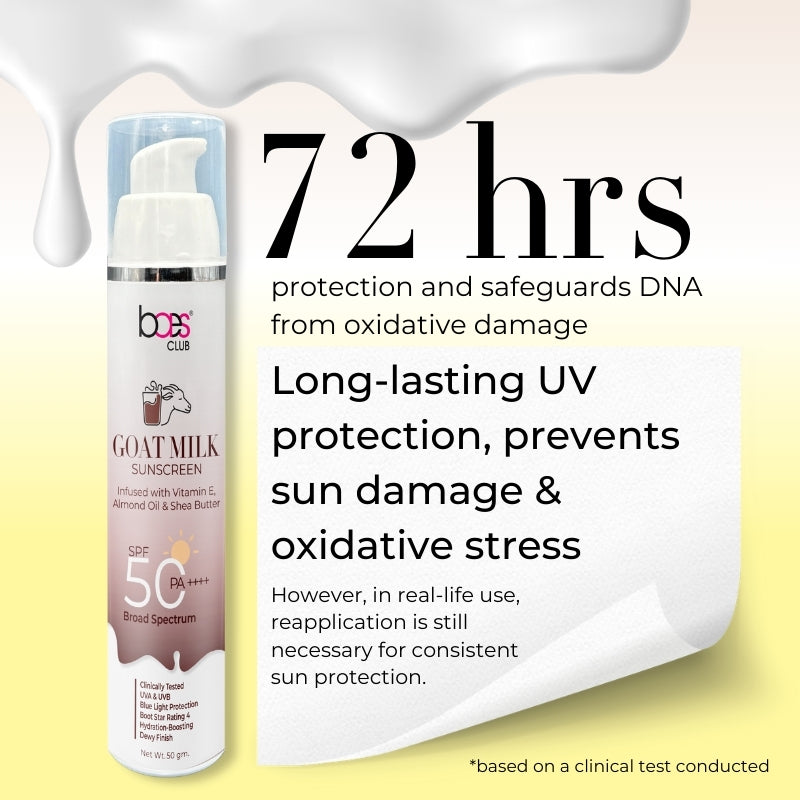
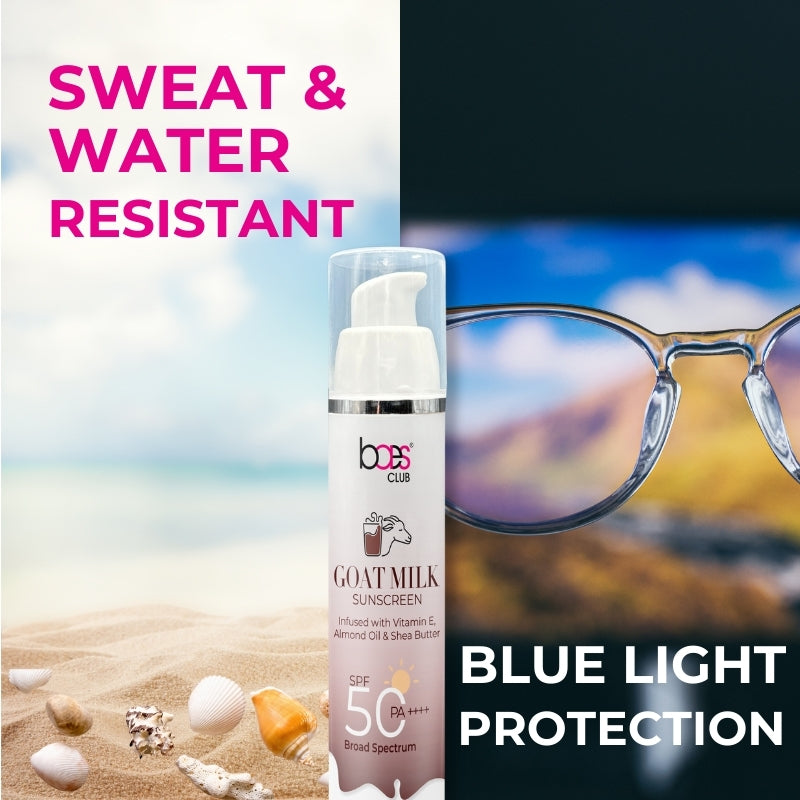
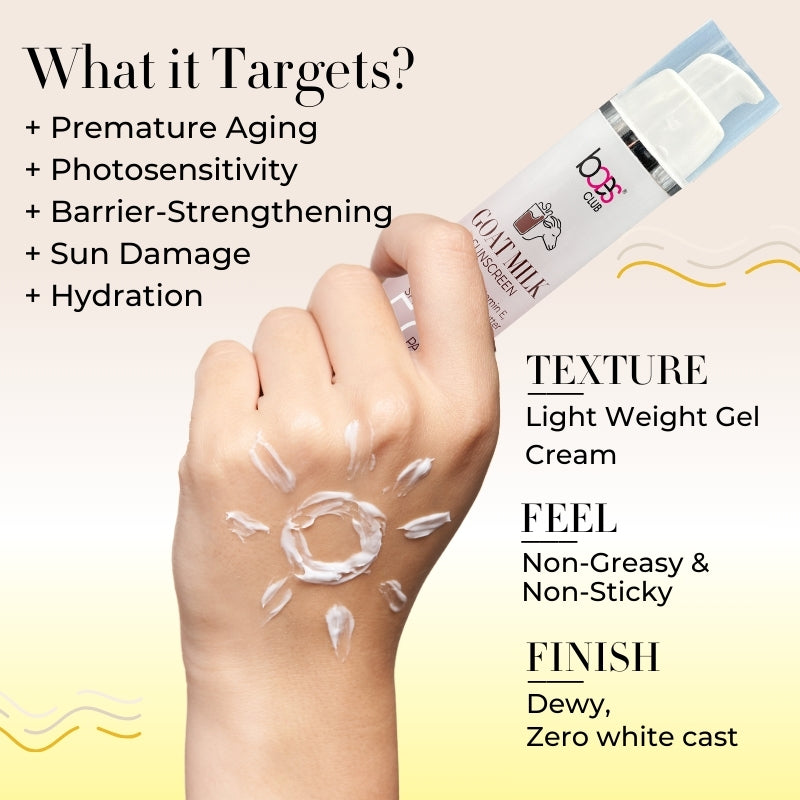
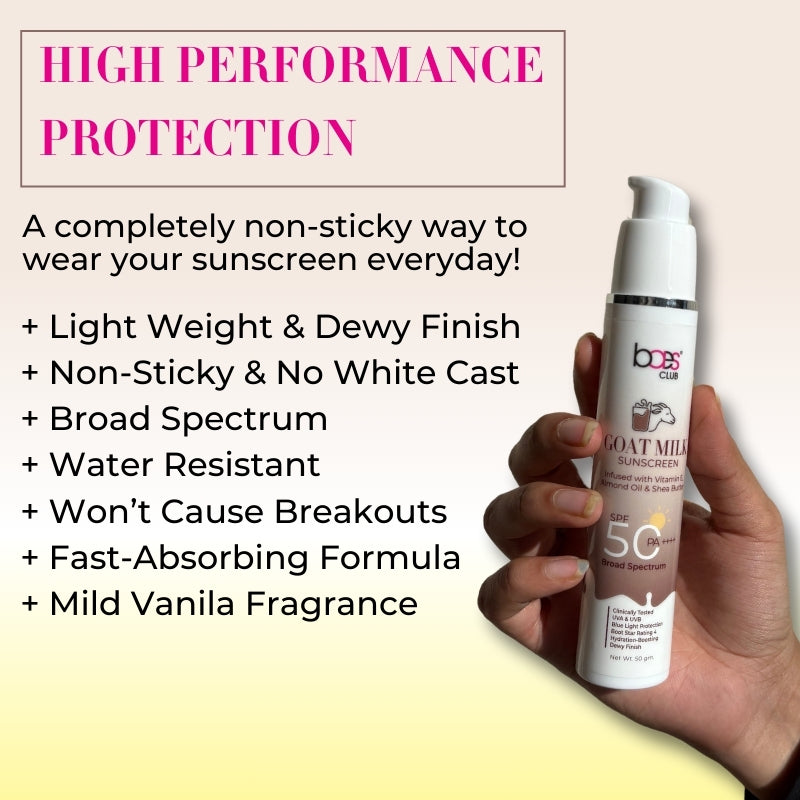


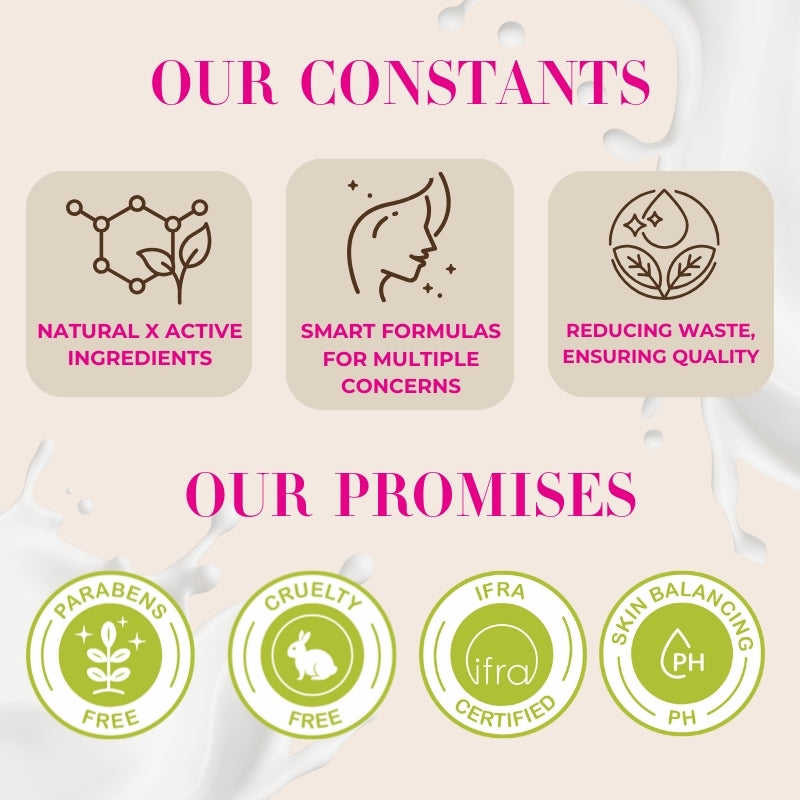
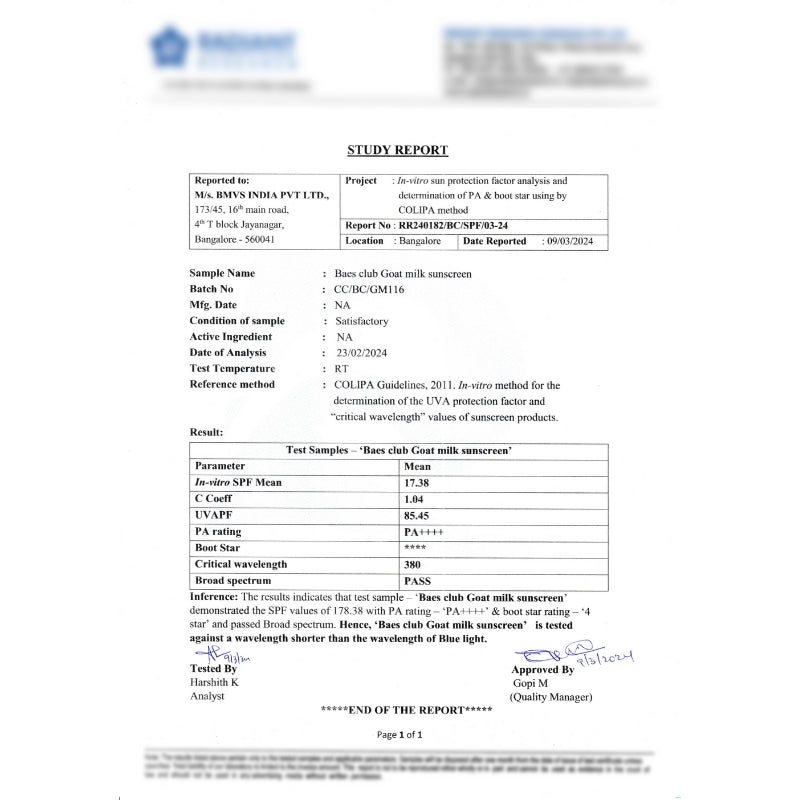
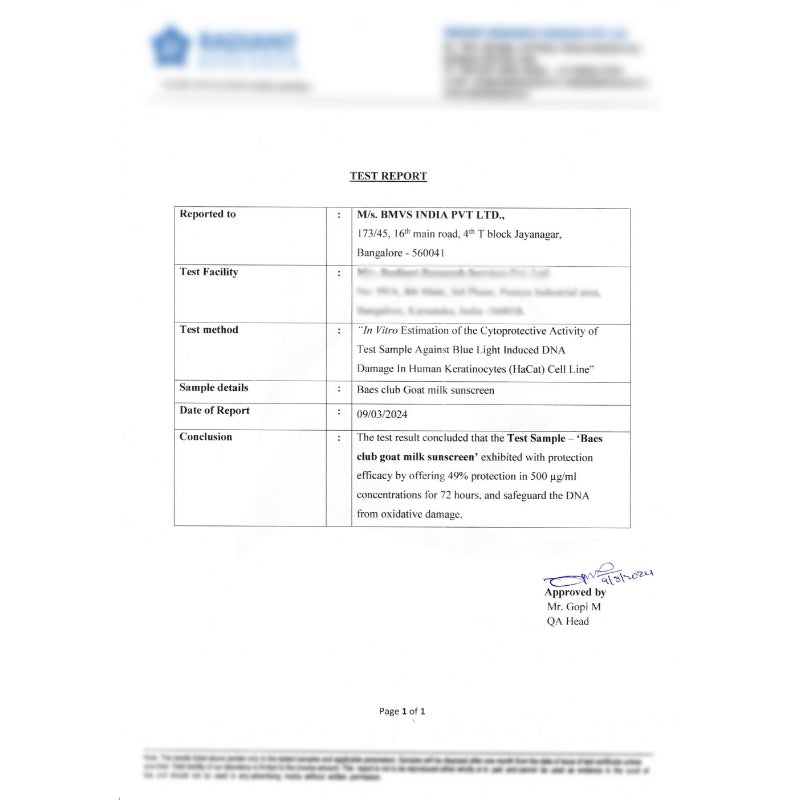
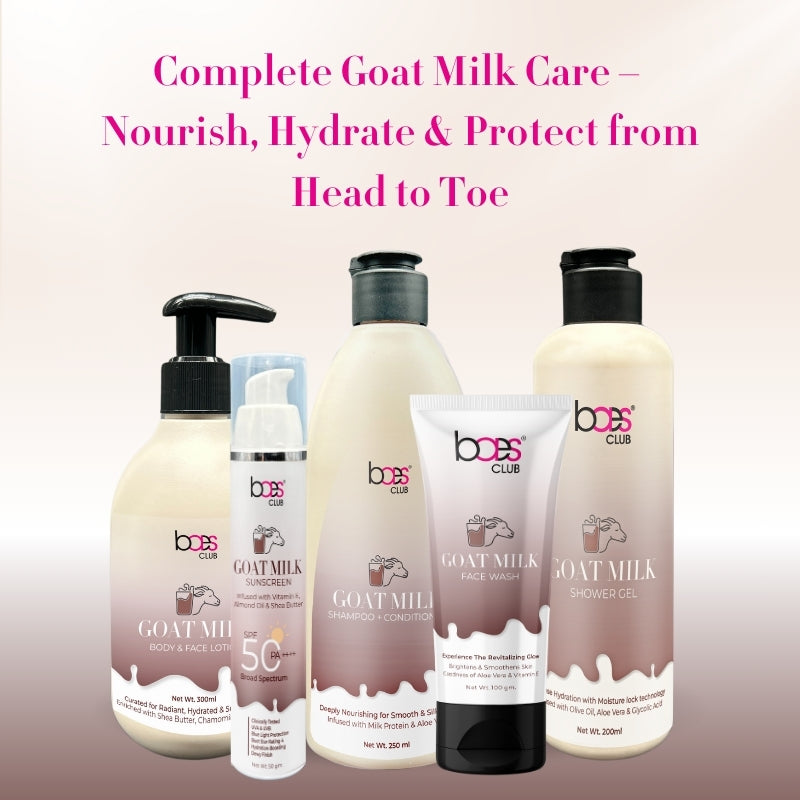
DEEPLY NOURISHING WITH HYDRATION & SKIN BARRIER SUPPORT
Key Ingredients
Before / After
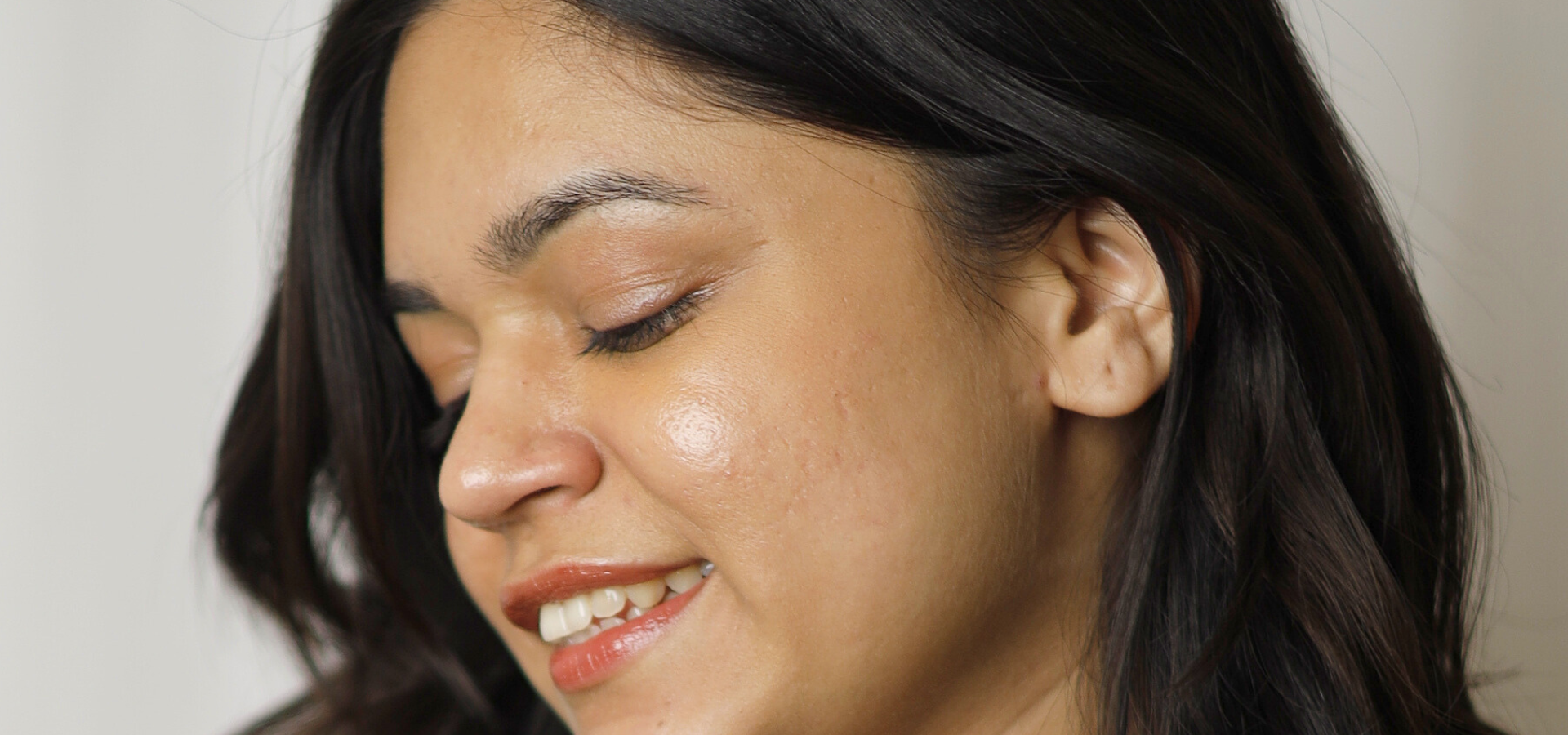
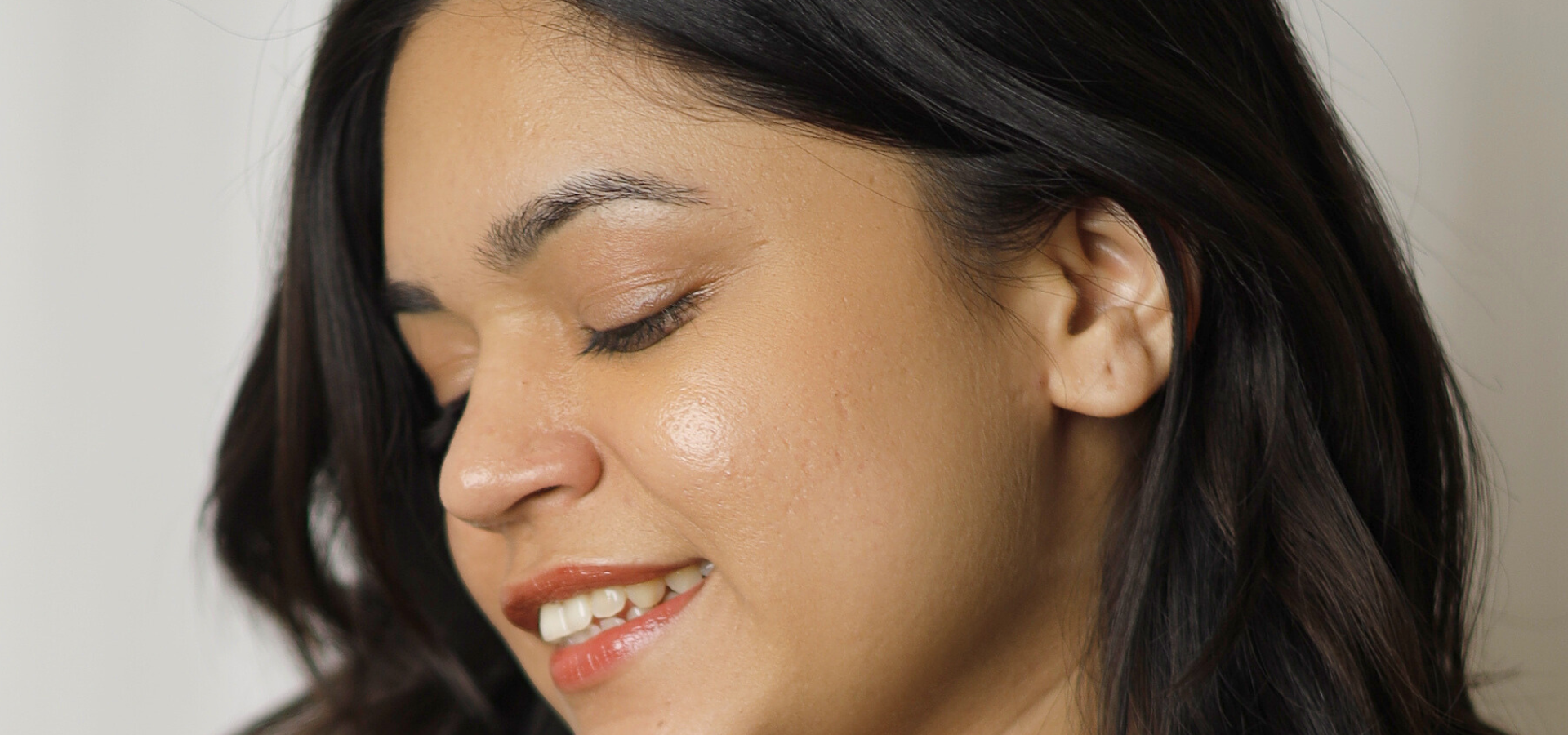
★ All images / claims shown are for illustration purposes only and may not accurately represent the actual product. Results may vary from person to person
FAQ
General Questions
How often should I apply sunscreen?
Apply Baes Club’s Goat Milk Sunscreen daily 30 minutes before sun exposure. Reapply it the same day every 4 hours and especially after swimming or towel drying for better protection from the sun.
Is this sunscreen suitable for all skin types?
Yes, Baes Club’s Goat Milk Sunscreen is suitable for all skin types, including sensitive skin because it is free from harsh chemicals and it contains natural and nourishing ingredients like goat milk, shea butter, almond oil and vitamin E.
Is it sweat and water-resistant?
Yes, Baes Club’s Goat Milk Sunscreen is both sweat and water-resistant and it helps and perfect you for outdoor activities, workouts and daily commutes.
Does this sunscreen help with hyperpigmentation?
Yes, Baes Club’s Goat Milk Sunscreen contains broad-spectrum protection and it has nourishing ingredients like goat milk, shea butter, almond oil and vitamin E that help to prevent and reduce hyperpigmentation caused by sun exposure and Blue Light.
How do I choose the right sunscreen for my skin type?
To choose the right sunscreen for your skin type, if you have dry skin go with a broad-spectrum formula with hydrating ingredients and if you have oily or acne-prone skin choose a lightweight formula. Always pick a sweat and water-resistant sunscreen for long-lasting protection. Choose Baes Club’s Goat Milk Sunscreen, it is the better option with the complete care.
Does this sunscreen leave a white cast?
No, Baes Club’s Goat Milk Sunscreen is a lightweight gel-cream formula that blends seamlessly and leaves zero white cast on the skin.
Can I wear this sunscreen under makeup?
Yes, Baes Club’s Goat Milk Sunscreen can be used as the last step in your skin care routine before applying makeup.
How does Baes Club’s Goat Milk Sunscreen benefit the skin?
Baes Club’s Goat Milk Sunscreen is enriched with the goodness of pure goat milk that contains vitamins, minerals and fatty acids that hydrate, nourish and soften your skin.
Is Baes Club’s Goat Milk Sunscreen free from harmful chemicals?
Yes, Baes Club’s Goat Milk Sunscreen is free from harmful chemicals that are formulated as skin-friendly ingredients that ensures safe and effective protection from sun.


